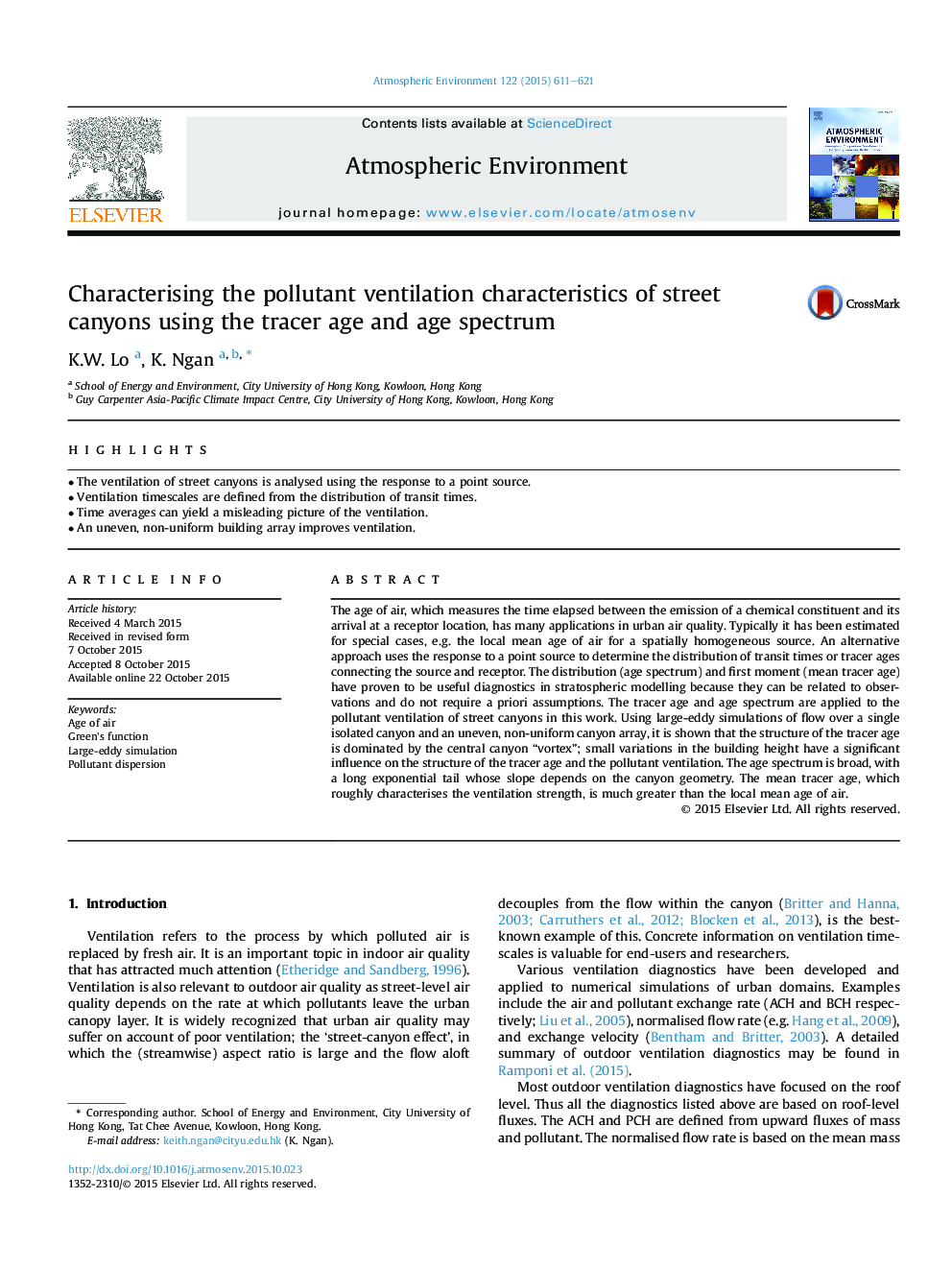| Article ID | Journal | Published Year | Pages | File Type |
|---|---|---|---|---|
| 6337069 | Atmospheric Environment | 2015 | 11 Pages |
Abstract
The age of air, which measures the time elapsed between the emission of a chemical constituent and its arrival at a receptor location, has many applications in urban air quality. Typically it has been estimated for special cases, e.g. the local mean age of air for a spatially homogeneous source. An alternative approach uses the response to a point source to determine the distribution of transit times or tracer ages connecting the source and receptor. The distribution (age spectrum) and first moment (mean tracer age) have proven to be useful diagnostics in stratospheric modelling because they can be related to observations and do not require a priori assumptions. The tracer age and age spectrum are applied to the pollutant ventilation of street canyons in this work. Using large-eddy simulations of flow over a single isolated canyon and an uneven, non-uniform canyon array, it is shown that the structure of the tracer age is dominated by the central canyon “vortex”; small variations in the building height have a significant influence on the structure of the tracer age and the pollutant ventilation. The age spectrum is broad, with a long exponential tail whose slope depends on the canyon geometry. The mean tracer age, which roughly characterises the ventilation strength, is much greater than the local mean age of air.
Related Topics
Physical Sciences and Engineering
Earth and Planetary Sciences
Atmospheric Science
Authors
K.W. Lo, K. Ngan,
